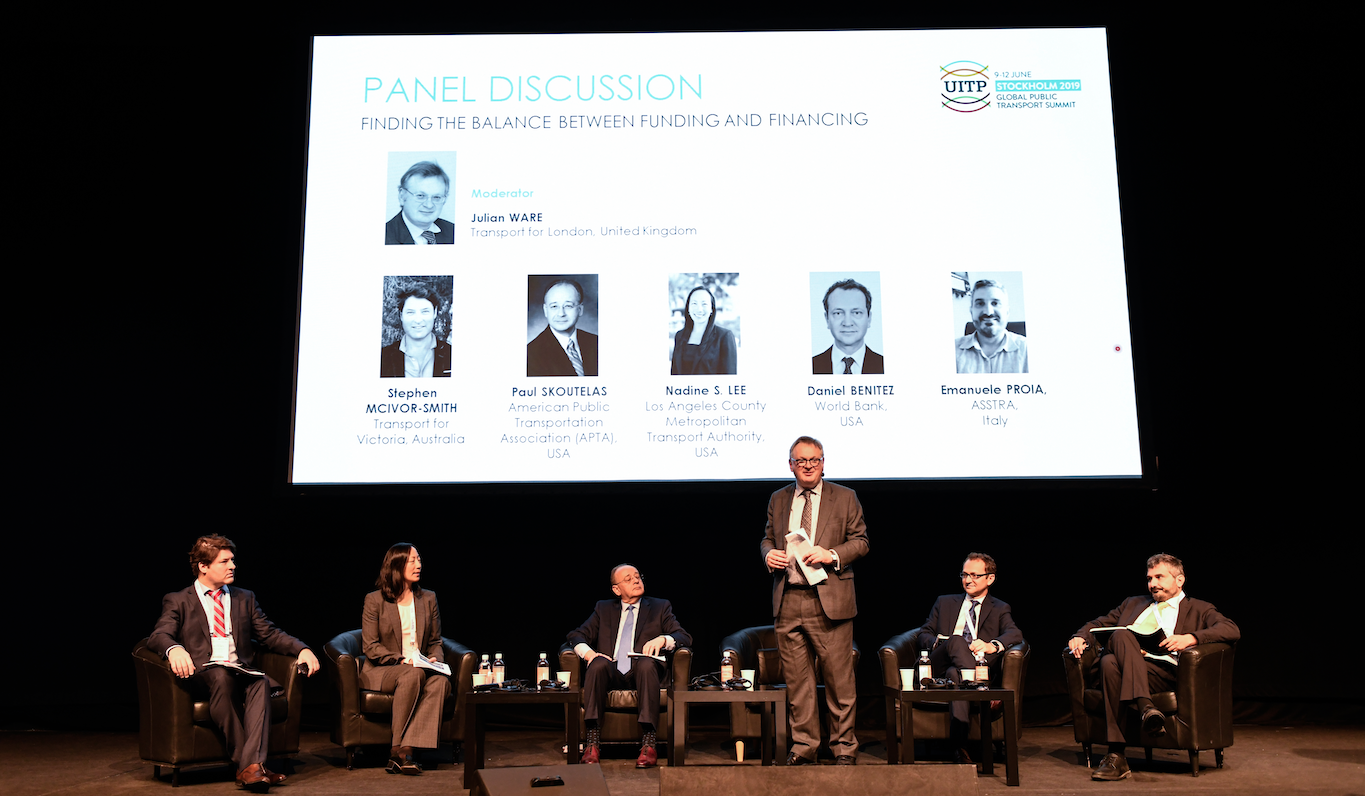
Photo: Screenshot-2019-06-13-at-14.00.43
Public support for US transport funding is growing
13 June 2019
by Jonathan Andrews
In the last 15 years, communities in the US got behind the raising of funds for public transport with over 70 percent of ballot measures passing. Ballot measures are proposed new regulations or legislation, which voters can approve or reject as a form of ‘direct democracy’.
The trend was revealed by Paul Skoutelas, President and CEO, American Public Transportation Association (APTA), during UITP’s Global Public Transport Summit in Stockholm.
“Local communities, counties and regions have taken their own initiatives and ballot measures to vote on new funding and new revenue for public transport,” he said.
He added that the trend line is improving. In 2017 15 out of 17 measures passed and last year 31 of 38 passed with an 80 percent passage rate.
“Local communities are recognising the importance of public transport and are saying we want the federal dollars but we can’t wait forever,” he said. “They want to accumulate the resources necessary to make that investment to take the initiative and raise local funds.”
Los Angeles is leading the way with its Measure M that was approved in 2016 and is set to raise US$120 billion for the Los Angeles County Metropolitan Transport Authority. In comparison, the rest of the country passed measures in the same year to raise US$170 billion, through 77 individual transit ballot measures.
Skoutelas added that there are additional benefits for those communities that are raising funds locally.
“What happens to those that do that, like LA, like Seattle, is that they are in a much stronger position in terms of attracting additional federal dollars for those investments,” he said.
Nadine Lee, Chief of Staff (Interim), Los Angeles County Metropolitan Transport Authority, said that the fact that the public is very supportive of public transport in her city is encouraging as the county is pushing forward with implementation of its Vision 2028 strategic plan and preparing for the Olympic Games in 2028.
Apart from Measure M the authority uses a “self-help county” model when essentially all the monies raised by a sales tax stay in that county to be used only for local projects.
“A lot of urbanised regions like Los Angeles and San Francisco put a lot of money into the system but we don’t always get all of our money back,” said Lee. “With the model of the self-help county, we can levy and retain tax dollars in our areas so that we can invest in our transportation services.”
She added that the triple A-rated authority has forecasted US$41 billion of debt financing over the next 40 years that is designed to match construction schedules for Measure M projects.
“In the US we seem to like shiny new objects and tend to put all our money towards those things first,” observed Lee. “The pressure in the US will increasingly be on trying to find the money to help run existing operations and that is something that the Europeans and Asians are doing very well.”







